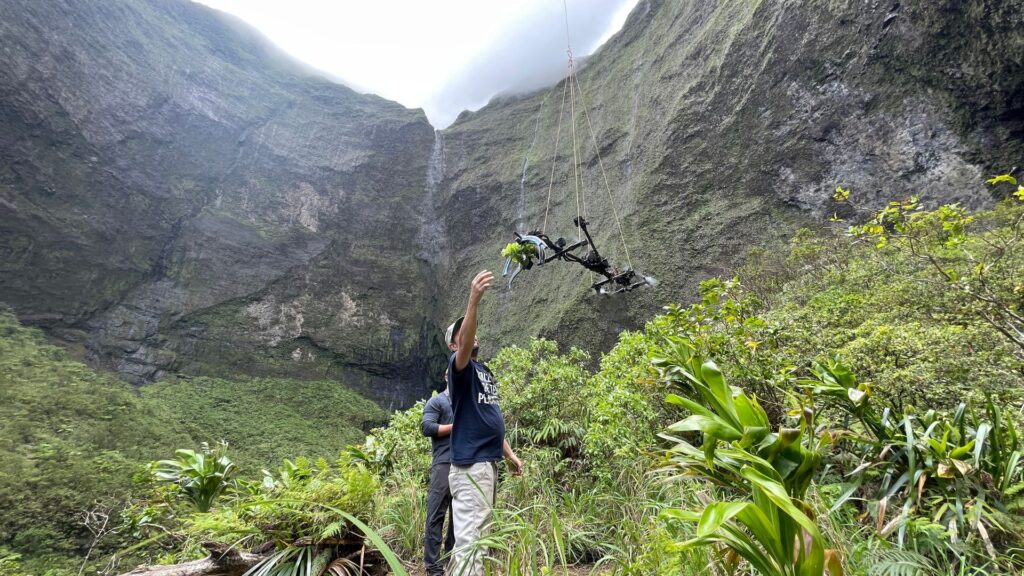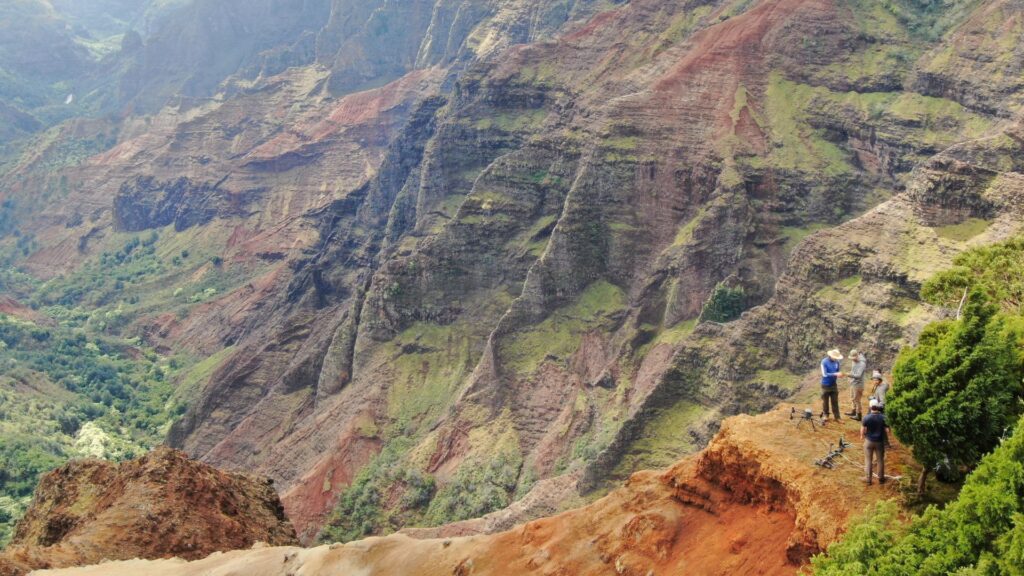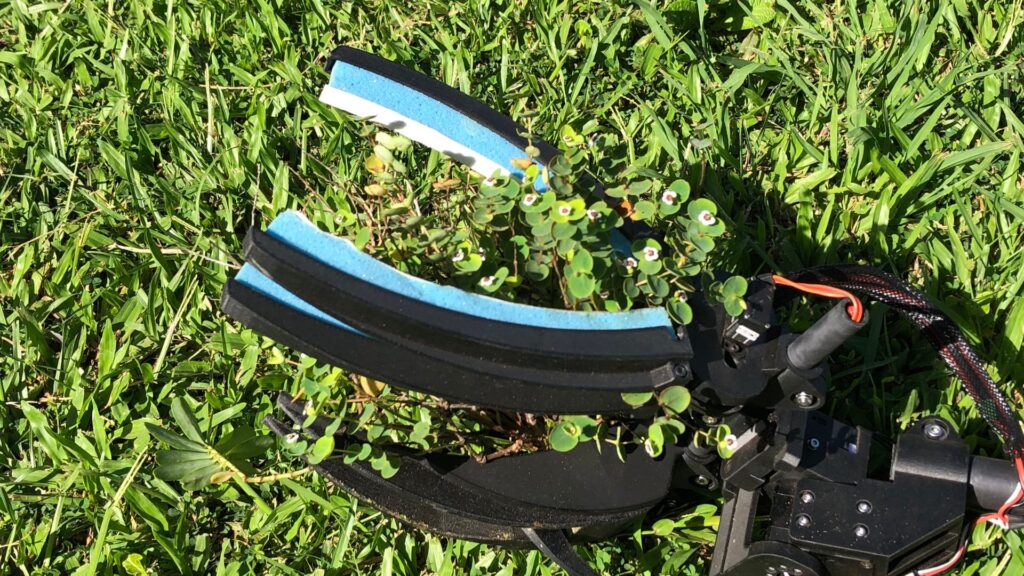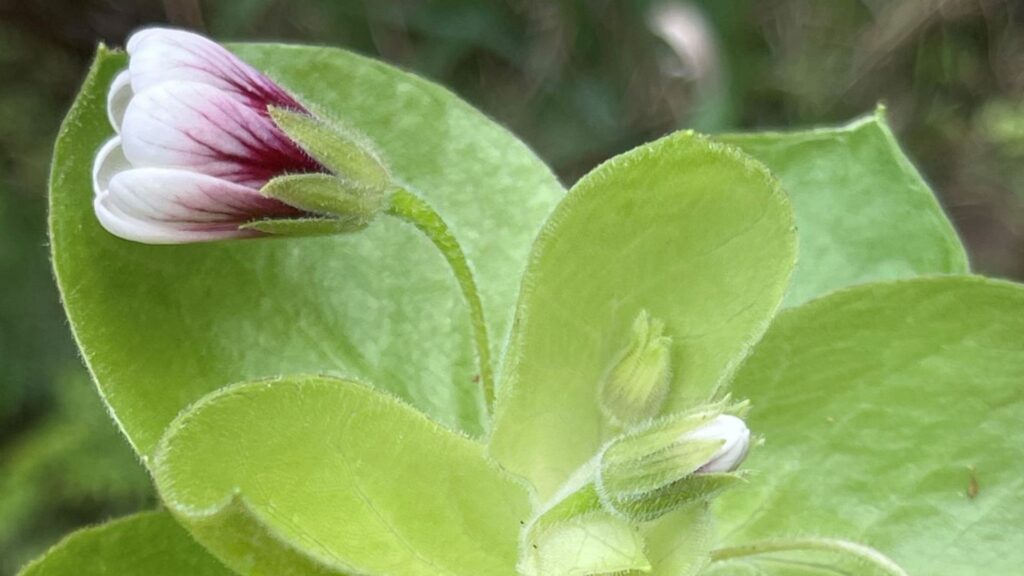By Ben Nyberg, GIS and Drone Program Coordinator

NTBG members who have been supporting our work for years know that the discovery, collection, and conservation of rare plants is central to our mission. Roughly 90 percent of the Hawaiian flora is found nowhere else on Earth, and so saving these plants is a great responsibility. But on an island like Kauai, where many rare plants grow in steep terrain and sheer cliffs, they can be impossible to access on foot.
For decades, NTBG has used traditional rappelling techniques to reach endangered cliff-dwelling plants like alula (Brighamia rockii) but in some cases, the plants are inaccessible to even the most experienced rappellers. In 2016, NTBG began experimenting with drone technology to discover plants that were otherwise beyond our reach.
Soon after our drone program began, we were encouraged by a number of rare plant discoveries in remote, previously unexplored cliff habitat. Drone technology was an exciting new tool that revealed rare plant populations we never imagined we could explore, but even as we made progress, we asked, “what’s next?”
The answer came when we were approached by a group of Canadian researchers from the University of Sherbrooke in Quebec who were grappling with similar challenges. The researchers had started a company, Outreach Robotics, and developed a drone mechanism they called DeLeaves that could collect plant material from treetops.
Their drone carried a tool suspended below it that can grasp and cut plants mid-air. DeLeaves proved highly effective for collecting plants directly below a drone, but could it be used on Hawaii’s sheer cliffs?

Excited by the chance to collaborate with the robotics team, we applied for a grant from the National Geographic Society with the hope of funding the development of a horizontal collecting arm. Our goal was to design a robotic arm that would enable us to collect seeds and cuttings from small, often fragile cliff dwelling species in Hawaii. When our application was approved, we quickly started the design process.
In our attempt to overcome the challenges of Hawaii’s extreme cliffs, we explored everything from long, extendable poles to semi-rigid vacuum hoses, and even one design that snapped like a clam shell. We were planning for our initial field trials when the COVID pandemic brought our work to a halt.
What at first appeared to be a major setback, later proved to be to our advantage. Travel restrictions delayed field trials for almost two years, but that allowed the team at the robotics lab in Quebec to build, test, and redesign the collecting arm without disruption. In the fall of 2021, as international travel was reopening, the team unveiled the MAMBA (Multi-Use Aerial Manipulator Bidirectionally Actuated). The draft design featured two independently functioning components — a lifting drone and the MAMBA mechanism.
MAMBA is suspended below the lifting drone but, unlike the earlier DeLeaves design, it has propellers that move the collecting arm forward and back like a pendulum. The device has a separate controller and remote video feed, allowing the MAMBA pilot to clearly see minute details within inches of the plant and cutting piece. The sampling head rotates in multiple directions, enabling the pilot the ability to align with and collect their branch of choice.

In October 2021, we initiated the first set of field trials on Kauai. Within a few hours of test flights in McBryde Garden, we felt comfortable deploying MAMBA into the wild. We were thrilled to find the device was stable, precise, and easy to operate. Focusing on target species such as akoko (Euphorbia eleanoriae), dwarf iliau (Wilkesia hobdyi), and hau kuahiwi (Hibiscadelphus distans), the MAMBA performed well, allowing us to secure collections from each species, in some cases from more than half a mile away.
Following our initial trial flights, the robotics team returned to Quebec where they continued to refine MAMBA. In March 2022 the team returned to Kauai ready to help us attempt to collect from target species which were particularly difficult subjects due to the plant’s growth habit or location.
These Kauai endemic species, all Critically Endangered, include Lysimachia inki, Kadua st-johnii, Lysimachia scopulensis, and laukahi (Plantago princeps var. anomala).

To better appreciate the challenges of collecting these extremely rare plants with this new technology, consider the case of Lysimachia iniki which grows on 3,000-foot high cliffs below Kauai’s summit, one of the wettest places on Earth. The extreme terrain and rainfall make this a particularly difficult area to operate drones.
After lugging the cumbersome equipment along muddy slopes and across a rushing stream, we were able to use a spotting scope to find plants with flowers and seeds. Climbing into the mist, the drone carried MAMBA to our target plants where we successfully collected a cutting from the sheer green wall and delivered it to us far below.
To our knowledge, the MAMBA collection of L. iniki was a first. The plant had been collected opportunistically after storms for the last 30 years, but our intentional collection yielded a large number of seeds from a healthy specimen, allowing us to deposit this invaluable collection to our seed bank and cuttings to our nursery where they rooted in captivity for the first time.
“Understanding the distribution and abundance of rare and endangered plants is a critical first step in their conservation.“
Ben Nyberg, GIS and Drone Program Coordinator
Another example of how drone technology is advancing rare plant conservation is our use of MAMBA to collect a sample from the extremely rare wahine noho kula (Isodendrion pyrifolium), a plant we were unable to identify by drone survey alone. After watching the MAMBA remotely cut and collect the plant, our excitement swelled as the drone returned. There is an undeniable thrill in extending one’s human hand to receive a botanical treasure from a robotic hand.
Previously documented on Niihau, Maui, Lanai and Hawaii Island in the mid 19th century, Isodendrion pyrifolium was thought to be extinct for more than a century until it was rediscovered on Hawaii in 1993. Another population was found on Oahu in 2015, but it was the MAMBA that allowed us to actually collect the species for the first time on Kauai.
Understanding the distribution and abundance of rare and endangered plants is a critical first step in their conservation. Drone technology makes this possible. Collecting seeds and cuttings from remote plant populations is the next step. Now drones can do that too. A third critical step in the conservation of plants is returning species to their natural habitat.
New projects now underway will eventually allow us to sow seeds onto inaccessible steep slopes. What we thought was impossible just five years ago is now reality. Armed with these new tools, a commitment to cooperation, and the determination to succeed, we are hopeful that these new discoveries will continue to positively impact plant conservation in Hawaii and far beyond.